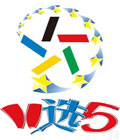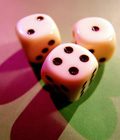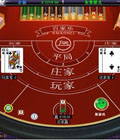“社交游戏”和“游戏化”之间的差别
“社交游戏”(social games)和“游戏化”(gamification)经常被混淆使用,但实际上,他们是差别迥异的两个概念。虽然“游戏化”中所包含的游戏运作方式的确是从“社交游戏”那里借鉴得来,可在许多现实场景下,人们所建立的并非是一个完整的游戏,而是在运用“游戏化”的理念。首先,让我们来看看两者的定义:
“社交游戏”建立在类似Facebook或者Google+等社交媒体平台上。这些游戏以轻松休闲为特质,玩或不玩全凭一时心情。设计这些游戏就是为了帮助玩家在社交网络中结识朋友。CityVille,Hidden Chronicles以及Words with Friends就是极受追捧的社交游戏典范。
“游戏化”指的是在“非游戏”框架领域内(non-game context)使用游戏运作方式的过程。从卫生健康领域到员工激励机制,都可以应用“游戏化”的概念吸纳那些浏览你的网页或使用应用程序的客户。Foursquare(译者注:一家基于用户地理位置提供服务信息的手机服务网站)和Mint.com(译者注:一个以在线应用程序构成的个人理财网站)就是“游戏化”的两个绝佳例子。
两者的相似之处
在讨论“社交游戏”和“游戏化”有何不同之前,先来看看它们的相似之处。
奖励不断,满足不断
CityVille的玩家用不了多久就能发现这款游戏的核心理念就是靠着不断的成功与奖励堆积而成的。在游戏的过程中,玩家总是不断地赢得积分,赚取虚拟货币,级数不断攀升。当然,只要坚持下去,你还能成为虚拟城市的市长,没事盖个面包烘焙店或者建个邮局玩玩。
与之类似,只要用户完成相应的要求,“游戏化”应用平台也会提供奖励。奖励是多种多样的:授予一座虚拟奖杯来祝贺用户达成某项经济或者健康目标;用户赚取积分或是虚拟货币,从而获得浏览以及分享网站内容的权限。
深陷其中,乐此不疲
“社交游戏”的运行特质能够确保玩家深陷其中,乐此不疲。在With Words with Friends中,你的朋友们可以就一项游戏对你发出挑战。在CityVille中,你必须定期登陆游戏以确保你的庄稼不会枯萎并从虚拟店铺中收取税金。
“游戏化”应用平台对于确保用户忠诚度也很有一套,原因就在于使用了同“社交游戏”一样的运行机制。举例而言,如果你使用了类似Fleetly的“游戏化”应用软件,那么你就会不时地想要打开Fleetly来跟踪关注自己的健康状况以及自己在健康排行榜上的名次进展。
玩家分享与招募新员
“社交游戏”如此成功的一个原因在于:“招募新员”被直接设立在了游戏中。在游戏过程中,总是要求玩家分享自己取得的成功信息或是向自己的好友求助。
“游戏化”同社交网络有着异曲同工之妙。以Dropbox为例,如果用户邀请朋友注册或是使用服务,那么邀请者将得到额外储存空间的奖励。
两者之差异
在看过了“社交游戏”同“游戏化”之间的相似之处以后,我们还应发现,“游戏化”应用在娱乐的范畴外增添了其它价值,并有能力改变现实世界。以下这些就是例子:
达成个人目标
对于用户而言,“游戏化”能够起到激励推动的作用,帮助用户做出生活改变,养成健康习惯。其中一个例子就是HealthMonth(以及现在的Budge)。这个网站致力于帮助用户设定并达成健康生活的目标。网站中所运用积分和奖励徽章等游戏运行机制来激励用户,并通过社交网络来确保用户能做到持之以恒。
Nike+通过加油和“捉人功能”(Tagging)来帮助用户实现健康目标。在跑步的过程中,Facebook上的好友每在跑动位置上点击一次,那么跑步者就能听到一声加油声。你还可以对一名好友使用“捉人功能”,直接向他的主屏幕推送“垃圾话”,从而一路“激励”好友完成整个跑步行程并转而对他人“吐槽报复”(也许就是对你)。
提升品牌认知度,吸引更多用户
虽然市场营销以及广告宣传依然是推介生意的重要途径,但是“游戏化”应用也可以成为助你开拓品牌或网站知名度的利器。最近,在DellWorld大会上,Dell公司通过旅途探险的概念引导与会者参观整个会场并推介了全新技术。接着,Dell公司又利用在这一过程中收集到的数据信息同客户保持实时联络,从而根据他们各自最感兴趣领域,选派专家对其进行后续详细介绍。
另一个例子来源于萨凡纳晨间新闻(Savannah Morning News)。该在线报纸的读者只要完成网站上的调查问题便能够阅读到隐藏的报纸新内容,如果读者向社交网络推荐该报纸,那么也能够获得相应的奖励。
保护环境
越来越多的人开始使用“游戏化”来监测自己的能源使用情况并和自己的朋友及邻居做比较。有了SimpleEnergy这样的应用软件,你就可以在挣取积分和奖章的同时和你的朋友展开竞争,看看到底谁节约的能源数目更多。这样一来,节约能源就变得十分有趣,而且成为了打发时间的轻松途径。
现在甚至还开发出了类似Chevy Volt这样植入汽车的“游戏化”程序。这种程序通过简单的小游戏使驾驶者的开车效率更高,从而节省汽油和电池使用量。
激励员工
虽然相对而言仍然是新的尝试,但NextJump等公司正在使用“游戏化”健康系统来激励自己的雇员保持快乐的心情和健康的状态。员工通过各项活动中的竞争,所获得的健康积分可以转换至自己的公司津贴账户。
其它的“游戏化”系统则对员工的日常工作提出要求。这种中央软件能够促使雇员缩短电话时间,收集更多用户数据;或者是像Target cashier game这样的监测软件那样,记录结账录入的速度,从而给予员工相应的积分和级别奖励。
译文:
Often the terms “social games” and “gamification” are used interchangeably, but in actuality they’re very different animals. While it’s true that gamification borrows its game mechanics from social gaming, there are many real-world situations where it makes more sense to apply gamification instead of building an entire game. First, let’s take a look at a definition of each concept:
Social games are built on a social media platform like Facebook or Google+. Casual in nature, they can be picked up or dropped at a moment’s notice and are designed to engage the player’s social network of friends. Games like CityVille, Hidden Chronicles, and Words with Friends are popular examples.
Gamification is the process of using game mechanics in a non-game context. This can be anything from health and fitness, to employee motivation, to simply engaging customers that use your website or app. Two popular examples of gamification include Foursquare and Mint.com.
How they’re alike
Before I talk about the differences between social games and gamification, let’s discuss their similarities.
Players win achievements
You don’t need to play CityVille for very long to see it’s centered around achievements. As you play, you’re constantly earning points, virtual currency, and leveling up. And don’t forget the long-term achievements like becoming the mayor of your town or building a bakery and a post office.
Like CityVille, gamification offers rewards for desired behavior. This can be anything from winning a virtual trophy for achieving a financial or health goal to earning points and virtual currency for viewing and sharing content on a website.
Players keep coming back
Social games have certain mechanisms to keep players coming back again and again. With Words with Friends, your friends can challenge you to a new game. In CityVille, you need to keep returning to make sure your crops don’t wither and to collect money from your businesses.
Gamification is also good at maintaining user loyalty because it uses the same game mechanics to draw users back again and again. For example, if you’re using a gamified app like Fleetly, you’ll want to continually return to the app to track your fitness stats and see your progress on the leaderboards.
Players share and recruit
One of the reasons social gaming is so successful is that recruitment is built directly into the game. As you play, you’re constantly asked to share your achievements or to ask friends for help.
Gamification taps into the player’s social network as well. With Dropbox, if you invite a friend to the service and they sign up, you’re both rewarded with additional storage space.
How they’re different
So you can see how social gaming and gamification are similar, but gamification adds value beyond entertainment and can be used to make a difference in the real world. Here are a few examples:
Achieve personal goals
Gamification can be used to motivate and drive important life changes and healthy habits in those who use it. Once example is HealthMonth (and now Budge), a site dedicated to helping you set and meet your healthy lifestyle goals. It uses game mechanics like points and badges to motivate you and the support of your social network to keep you on track.
Nike+ helps you achieve your fitness goals by using game mechanics like cheering and tagging. During your run, you will hear a cheer every time a Facebook friend clicks the Like button on your run post. You can even tag a friend and send trash talk directly to their home screen until they complete their run and tag someone else (probably you)。
Build brand awareness and engagement
While marketing and advertising are still important ways to get the word out about your business, gamification can also be used to engage customers with your brand or website. Recently, at the DellWorld conference Dell used the concept of Journeys to guide participants around the conference and to learn about new technologies. They then used the data collected from the Journeys to follow up with customers and offer them access to experts in their area of interest.
Another example is Savannah Morning News, an online newspaper that takes readers on guided quests around the site to expose them to new content and reward them for sharing with their social network.
Protect the environment
One emerging trend is using gamification to monitor your energy use and compare it to your friends and neighbors. With apps like SimpleEnergy you can compete with your friends to see who can save the most energy while earning points and badges. This essentially turns energy conservation into a fun and easy way to pass the time.
There are even gamification programs built into cars like the Chevy Volt that help you save gas and battery power with a simple game that motivates you drive more efficiently.
Motivate employees
While still a relatively new way to use gamification, a few companies like NextJump are implementing health gamification systems to encourage employees to stay happy and healthy. Employees compete with one another in attendance-based activities, eventually earning health points that can be applied to their corporateperks account.
Other gamification systems engage workers in their daily tasks. This might be call center software that encourages employees to keep calls short and collect customer data, or it could be a check out program like the Target cashier game that measures checkout speed and awards points and levels.
- 上一篇:适当玩视频游戏可以提高视力
- 下一篇:儿童过度玩游戏或对关节健康不利
相关推荐
随机专题



 您现在的位置:
您现在的位置: 
 澳门骰宝下注策略
澳门骰宝下注策略 百家乐玩法心得
百家乐玩法心得 斗地主新玩法
斗地主新玩法 斗地主要牌绝技
斗地主要牌绝技


